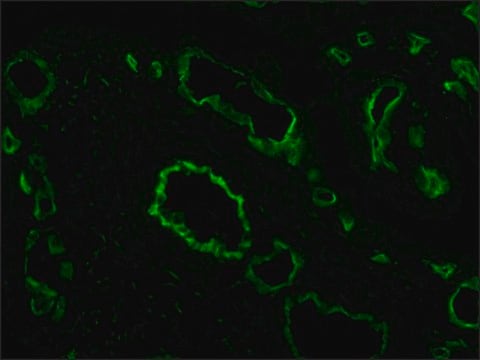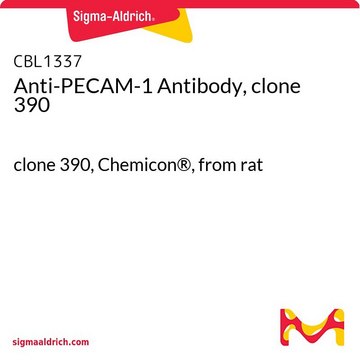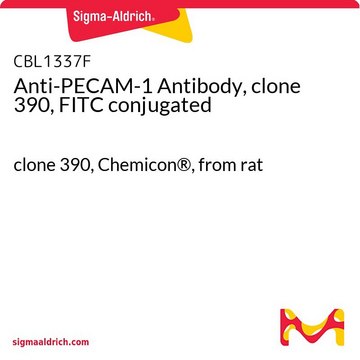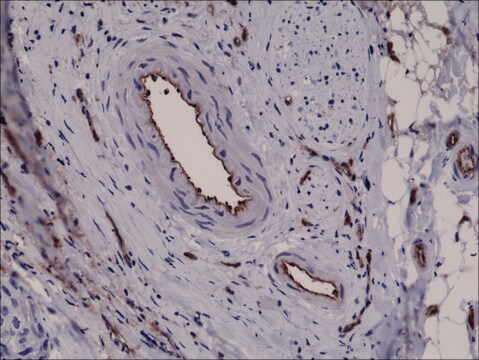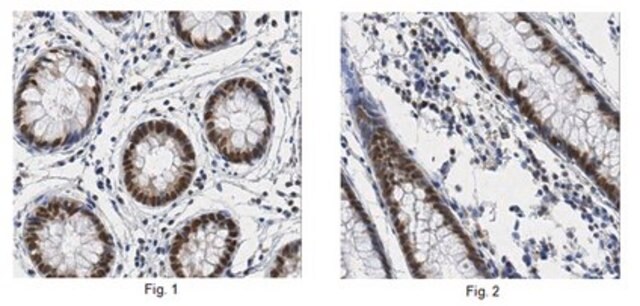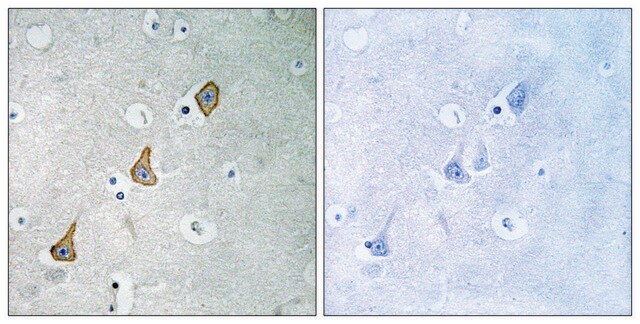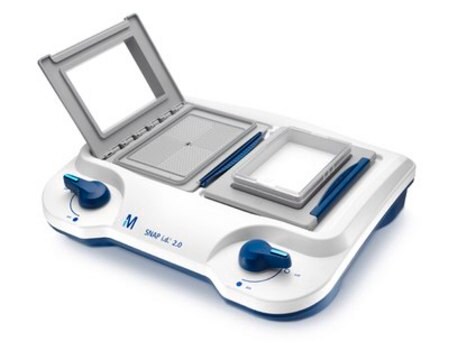CBL468
Anti-PECAM-1 Antibody, domains 3-6 of human PECAM-1, clone HC1/6
clone HC1/6, Chemicon®, from mouse
Sinônimo(s):
CD31
About This Item
Produtos recomendados
fonte biológica
mouse
Nível de qualidade
forma do anticorpo
purified immunoglobulin
clone
HC1/6, monoclonal
reatividade de espécies
human
fabricante/nome comercial
Chemicon®
técnica(s)
flow cytometry: suitable
immunohistochemistry (formalin-fixed, paraffin-embedded sections): suitable
immunoprecipitation (IP): suitable
Isotipo
IgG1
nº de adesão NCBI
nº de adesão UniProt
Condições de expedição
wet ice
modificação pós-traducional do alvo
unmodified
Informações sobre genes
human ... PECAM1(5175)
Especificidade
FUSION PARTNER: P3-x63Ag8.653 myeloma cell line
Imunogênio
Aplicação
This antibody will stain frozen tissue sections
Suitable for immunoprecipitation studies
Suitable for flow cytometry either indirectly or directly when labelled with FITC or R-PE
Suitable for use on formalin fixed paraffin embedded sections after protease pre-treatment.
Optimal working dilutions must be determined by the end user.
forma física
Nota de análise
Activated microglial cells
Outras notas
Informações legais
recomendado
Código de classe de armazenamento
10 - Combustible liquids
Classe de risco de água (WGK)
WGK 2
Ponto de fulgor (°F)
Not applicable
Ponto de fulgor (°C)
Not applicable
Certificados de análise (COA)
Busque Certificados de análise (COA) digitando o Número do Lote do produto. Os números de lote e remessa podem ser encontrados no rótulo de um produto após a palavra “Lot” ou “Batch”.
Já possui este produto?
Encontre a documentação dos produtos que você adquiriu recentemente na biblioteca de documentos.
Nossa equipe de cientistas tem experiência em todas as áreas de pesquisa, incluindo Life Sciences, ciência de materiais, síntese química, cromatografia, química analítica e muitas outras.
Entre em contato com a assistência técnica